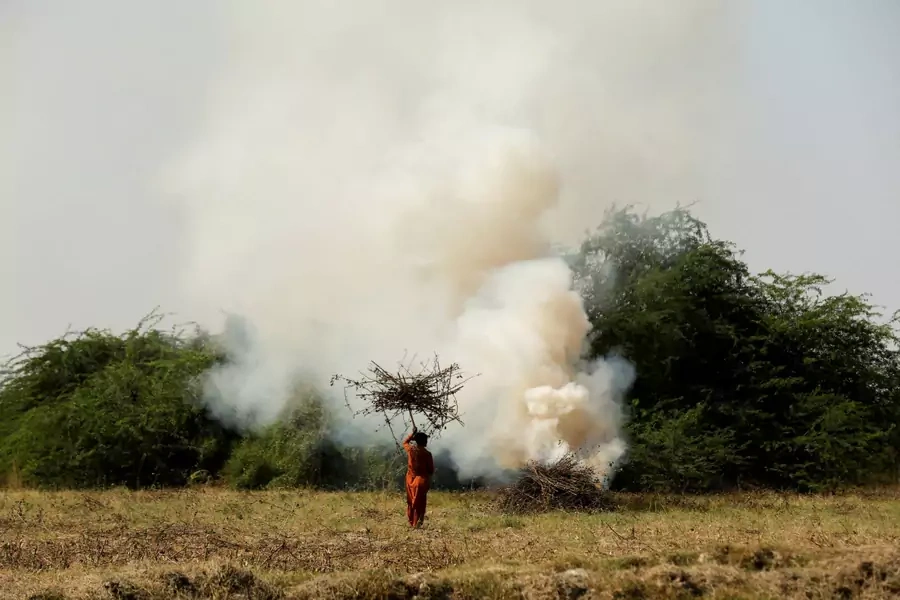Increasing U.S. Aid to Pakistan Is a Strategic and Moral Imperative

Pakistan faces a grave and growing crisis. In late summer, historic floods ravaged the South Asian nation, submerging a third of the country under water and displacing millions. Meanwhile, Pakistan’s economy has reached a breaking point and political unrest threatens to throw the nation into further disarray. At the climax of the floods, international media covered the disaster extensively and donor countries—including the United States—rushed in with pledges of assistance. As of November 2022, the United States has delivered $97 million in aid to Pakistan. However, this figure barely registers on the scale of Pakistan’s recovery requirements, estimated at $40 billion. Increasing assistance will not only avert the deepening crisis in Pakistan and fulfill U.S. humanitarian obligations, but will also serve U.S. strategic interests.
The scale of Pakistan’s predicament cannot be understated. Over 1,500 people died and 12,000 were injured in the summer floods. Infrastructure across Pakistan was crippled: thousands of kilometers of road and hundreds of bridges were destroyed, as well as almost two million homes.
More on:
Adding pressure in crisis, Pakistan is suffering from high inflation—roughly 26 percent year-on-year in October 2022—and low foreign exchange reserves. As prices for liquified natural gas skyrocket with the war in Ukraine, Pakistan is struggling to secure essential imports. The resumption of International Monetary Fund (IMF) funding in August has done little to plug the gaps. While bilateral creditors have offered debt relief, this is largely confined to allowing the postponement of payments in the short-term and the forgiveness of small amounts of debt.
Political tensions have also added to the challenges in Pakistan, hampering government capacity. After his ouster by a vote of no-confidence in April, former Prime Minister Imran Khan has consolidated his political popularity, challenged the sitting government to hold early elections, and survived an assassination attempt on November 3.
The severity of these converging obstacles underscores the need for adequate U.S. aid to Pakistan. Unfortunately, these days Pakistan has few friends in Washington. Many U.S. observers have accused Pakistan of enabling the Afghan Taliban throughout the U.S. war in Afghanistan. In addition, advocates of the budding U.S.-India relationship worry that engagement with Pakistan might disrupt ties with the Modi administration. Concerns about corruption have also tarnished attempts to build support for more aid.
Despite these concerns, the United States should act to alleviate the crisis in Pakistan. On one hand, if the United States wants to honor its commitments to humanitarianism, aid to Pakistan should be a top moral priority. The Biden administration has pledged to “rally the world to meet our common challenges.” The destructive effects of climate change that Pakistan is suffering today is a common challenge. Furthermore, norms of environmental justice compel countries who built their riches on the degradation of the environment, like the United States, to help Pakistan, one of the world’s most climate-vulnerable nations and a negligible contributor to historical global emissions.
On the other hand, even American pragmatists should heed Pakistan’s need for aid. Catastrophe in Pakistan is not in the U.S. national interest. A destabilized Pakistan would spell disaster for regional security: a depleted Pakistani government would inevitably give regional militant groups like the Tehreek-e-Taliban Pakistan more breathing room. In addition, a Pakistan in crisis would likely be less capable of performing its role at the center of the new U.S. “over-the-horizon” counter-terrorism strategy. Operations like the recent U.S. killing of Al Qaeda leader Ayman al-Zawahiri require Pakistani support, coordination, and airspace. Finally, as the United States seeks to counterbalance Chinese influence in South Asia, increased aid could capitalize on growing reservations in Pakistan about the tight-knit economic relationship with China.
More on:
So how should the United States assist Pakistan? For starters, the overall level of assistance should increase dramatically, as the $97 million pledged thus far will have a minimal impact on Pakistan’s predicament. The United States can help with the flood recovery in other ways: technical teams to support the construction of climate-resilient infrastructure and health supplies to address growing outbreaks of waterborne diseases, for example. The United States can also do more to address Pakistan’s financial health. The recent rollover of the suspension of payments on $132 million in debt was a good start, but the United States must continue to rally international debtors to suspend and restructure Pakistani debt, replenish foreign exchange reserves, and support crucial imports. The future of the South Asian nation, and U.S. regional interests, depend on it.
Andrew Gordan is an intern for India, Pakistan, and South Asia at the Council on Foreign Relations and a junior at Harvard University.
 Online Store
Online Store